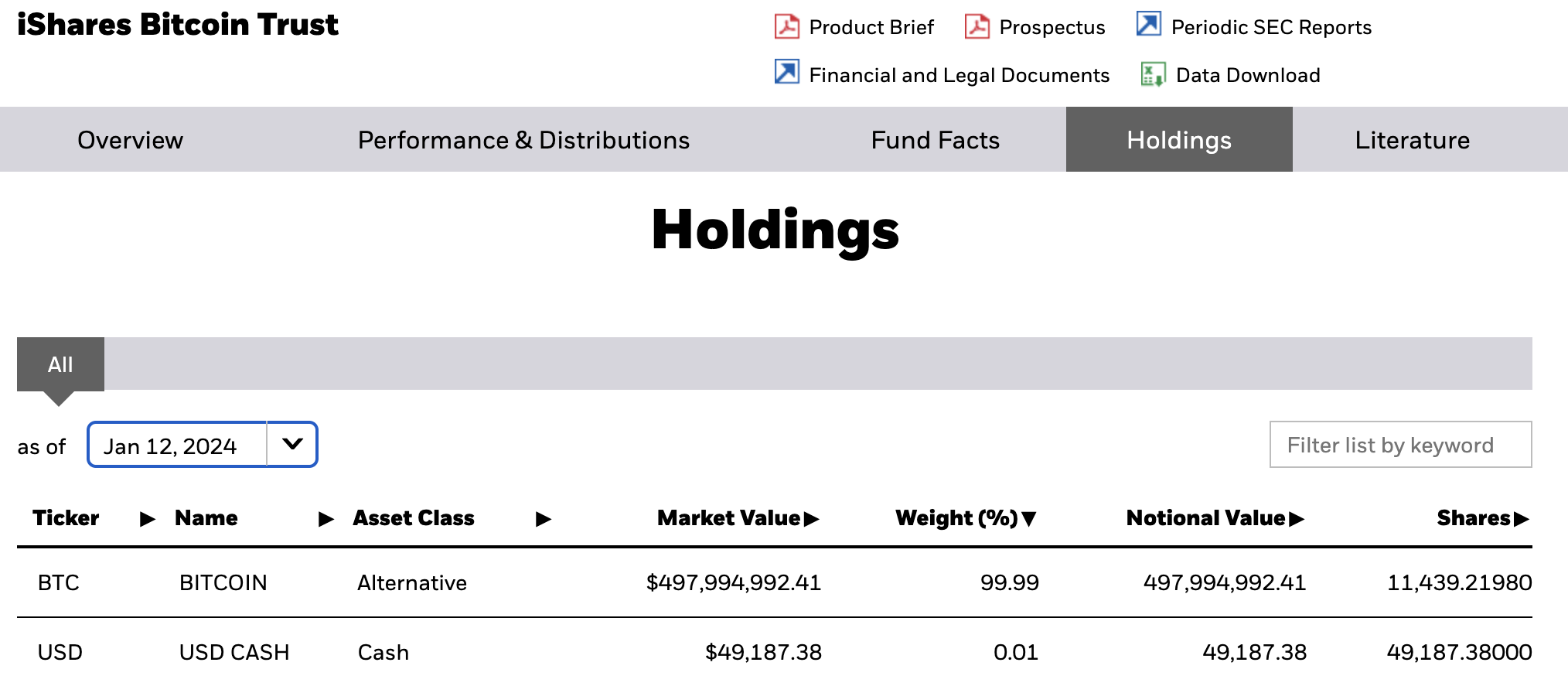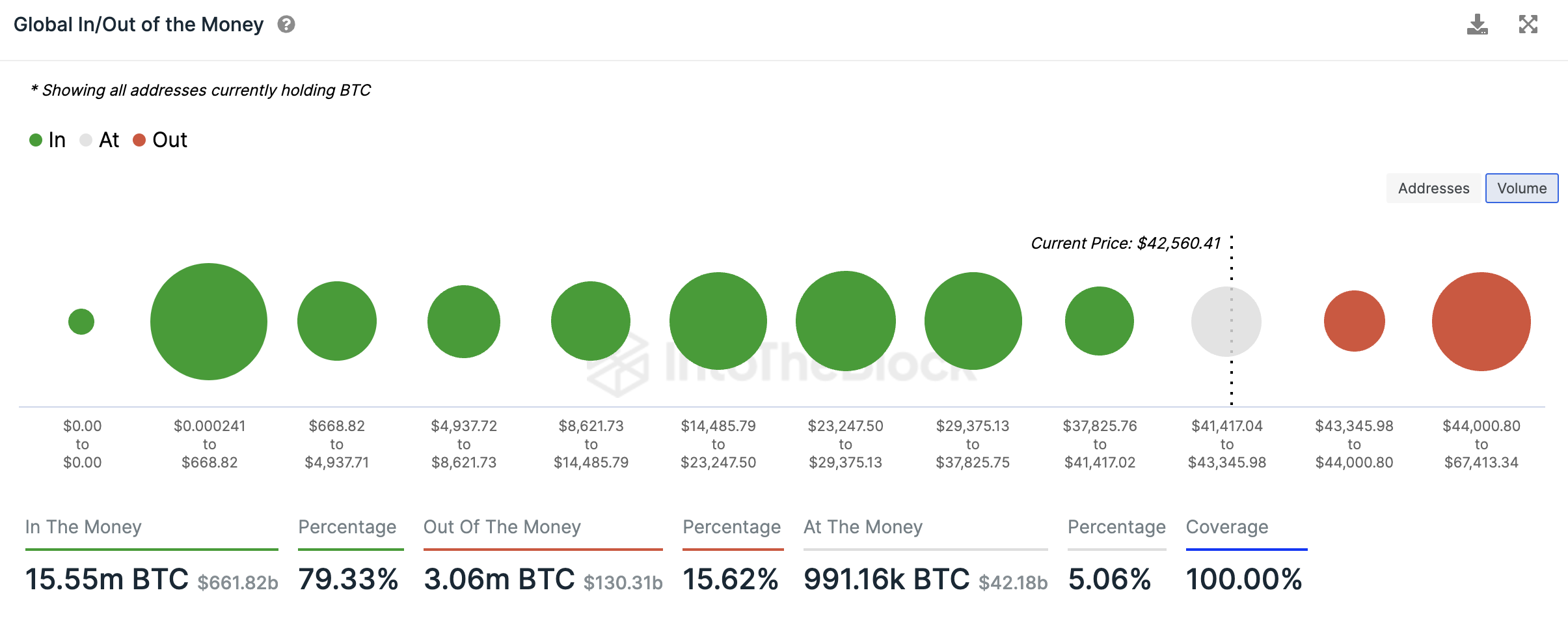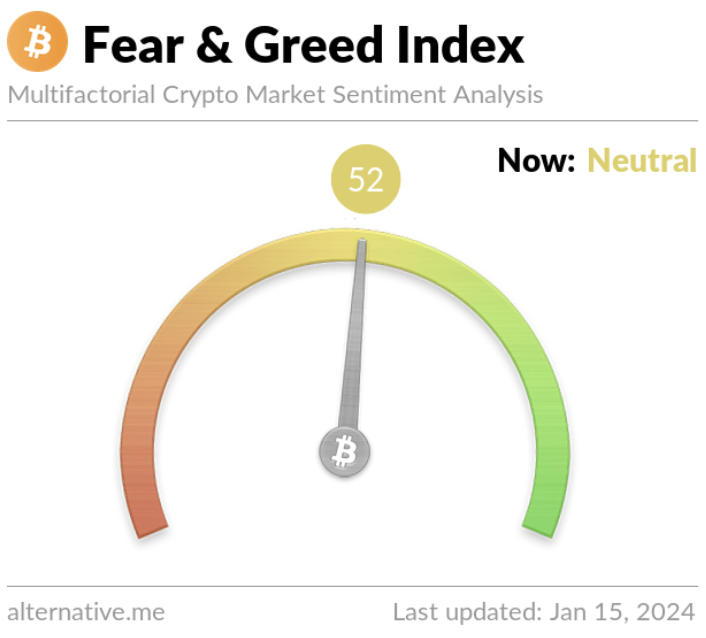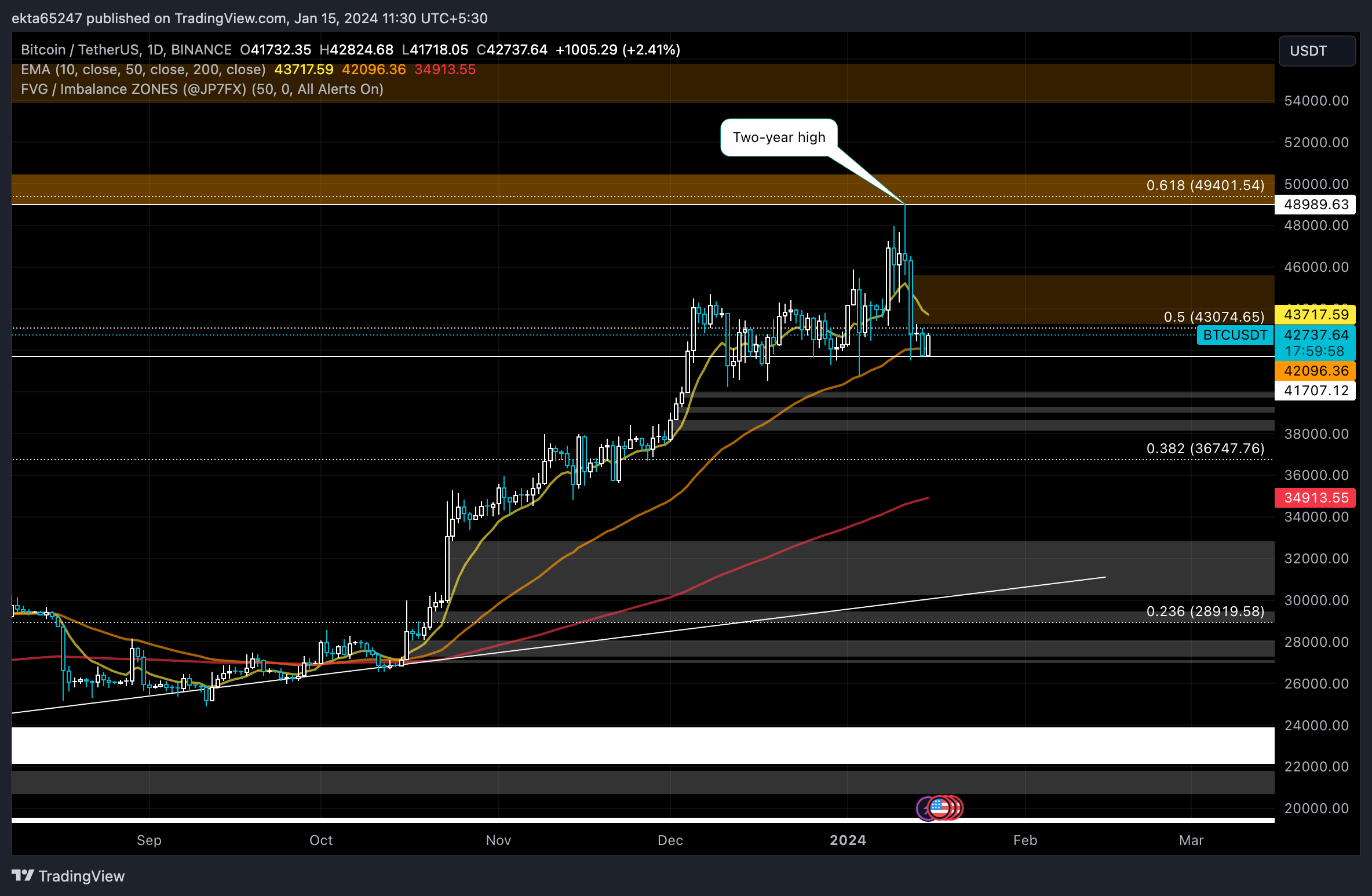- Bitcoin price dropped to $41,707, and BTC price made a comeback above $42,500 on Monday.
- Rising Bitcoin supply on exchanges saw BTC fear and greed index shift to neutral.
- Bitcoin whales engaged in profit-taking as the BTC price slipped from $46,900 to $41,700, according to Santiment data.
Bitcoin (BTC) price slipped to its support zone on Monday as market participants turned their attention to Ethereum and altcoins. BTC Spot ETF approvals by the Securities and Exchange Commission (SEC) turned out to be a “sell the news” event, with Bitcoin suffering a 15% decline in its price.
At the current price, 79.33% of BTC wallet addresses are profitable, on-chain data shows. Crypto analysts have said that BTC issuers’ accumulation of the asset could catalyze a recovery in the cryptocurrency as it fuels demand.
Daily digest market movers: Bitcoin ETF issuers could amass more BTC than largest public holders
- Luke Broyles, a crypto expert on X, said that at the current rate, BlackRock could end up owning more Bitcoin than MicroStrategy by February 1. Broyles argued this could change if current rates slow down or Bitcoin price rallies.

iShares Bitcoin Trust of BlackRock holds over $497 million in BTC. Source: iShares website
- Demand for Bitcoin from ETF issuers could catalyze a recovery in BTC price as the asset’s downtrend seems to have hit support at $41,700.
- BTC is currently in a support zone ($41,417 to $43,345) where 2.93 million addresses acquired 991,100 BTC, according to IntoTheBlock data. The next target to the upside is the $43,345 level.

Global In/Out of the Money. Source: IntoTheBlock
- Factors that likely contributed to Bitcoin’s recent decline include its rising supply on exchanges and whale profit-taking.
- BTC supply on exchanges climbed from a six-month low of 5.30% on January 7 to 5.39% on Monday. Typically, an increase in the asset’s supply on exchanges is considered bearish as it may contribute to a rise in selling pressure.
%20[10.29.32,%2015%20Jan,%202024]-638408954652267750.png)
Bitcoin supply on exchanges. Source: Santiment
- Santiment data shows how the recent spikes in whale transactions valued at $100,000 and higher coincide with similar moves in the Network Realized Profit/Loss metric. This means that large wallet addresses are indeed taking profits, contributing to push BTC price lower, according to Santiment data.
%20[10.29.36,%2015%20Jan,%202024]-638408954915221686.png)
Bitcoin whale transactions and network realized profit/loss. Source: Santiment
- The Bitcoin Fear and Greed index, which analyzes the current market sentiment of BTC holders, shows that sentiment has shifted from “Extreme Fear” to neutral.

Bitcoin Fear and Greed Index. Source: Alternative.me
Technical Analysis: Bitcoin price eyes recovery after price drops to $41,700
Bitcoin price fell to the $41,707 level, below its two long-term 10-day and 50-day Exponential Moving Averages (EMAs) at $43,710 and $42,094, respectively. BTC hit a two-year peak $48,989 on January 11, before dropping to support at $41,707.
On the upside, BTC price faces resistance at the 50% Fibonacci retracement level of $43,074 of the decline registered from November 2021 to November 2022.

BTC/USDT 1-day chart
On the downside, a daily candlestick close below the 38.2% Fibonacci retracement level at $36,747 could invalidate the bullish thesis for BTC price.
CRYPTOCURRENCY PRICES FAQS
How do new token launches or listings affect cryptocurrency prices?
Token launches like Arbitrum’s ARB airdrop and Optimism OP influence demand and adoption among market participants. Listings on crypto exchanges deepen the liquidity for an asset and add new participants to an asset’s network. This is typically bullish for a digital asset.
How do hacks affect cryptocurrency prices?
A hack is an event in which an attacker captures a large volume of the asset from a DeFi bridge or hot wallet of an exchange or any other crypto platform via exploits, bugs or other methods. The exploiter then transfers these tokens out of the exchange platforms to ultimately sell or swap the assets for other cryptocurrencies or stablecoins. Such events often involve an en masse panic triggering a sell-off in the affected assets.
How do macroeconomic releases and events affect cryptocurrency prices?
Macroeconomic events like the US Federal Reserve’s decision on interest rates influence risk assets like Bitcoin, mainly through the direct impact they have on the US Dollar. An increase in interest rate typically negatively influences Bitcoin and altcoin prices, and vice versa. If the US Dollar index declines, risk assets and associated leverage for trading gets cheaper, in turn driving crypto prices higher.
How do major crypto upgrades like halvings, hard forks affect cryptocurrency prices?
Halvings are typically considered bullish events as they slash the block reward in half for miners, constricting the supply of the asset. At consistent demand if the supply reduces, the asset’s price climbs. This has been observed in Bitcoin and Litecoin.











